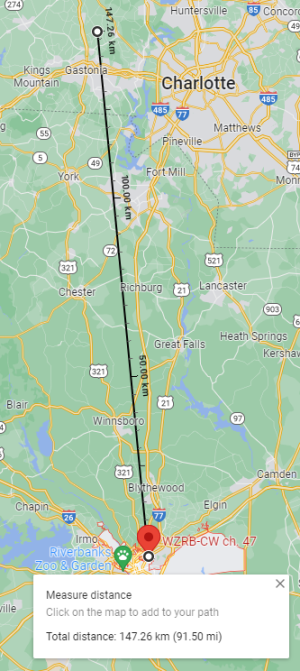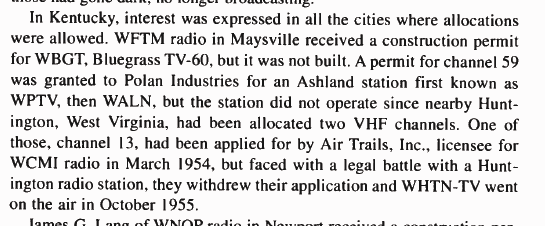I know that during the analog days, there was such a chart, that by the mid-1960s had become pretty much set in stone, at least for VHF allocations, due to the need scrupulously to maintain co-channel distance separation and avoidance of adjacent channels (with the exception of 4/5, and obviously, 6/7 and 13/14). The digital channel assignments have been in a state of constant flux as stations seek ideal channel assignments, and what would have been extreme short-spacing in analog days is just par for the course in the digital era, such as stations in Charlotte (WJZY actually licensed to Belmont) and Columbia (WZRB) sharing OTA 25, likewise for WCIV in Charleston. Never mind that such "shoehorning" really plays hob with one's ability to DX TV, but then again the FCC doesn't have enabling of DX as one of its priorities, far from it. When you only have 30 channels (7-36), leaving low-VHF out of the mix, as the song goes, "something's gotta give", even if cities and towns in between two allocations lose both signals (as happens in Winnsboro SC, between Charlotte and Columbia, WJZY and WZRB cancel each other out, end result, zilch).
Short version, will there ever be a "fixed for all time" channel assignment list, as existed in the analog days? (It took an act of Congress, figuratively and almost literally, to reassign channels, such as when WTVQ in Lexington KY coveted and ended up getting Portsmouth, Ohio's channel 36 allocation, and the "drop-ins" such as WVAH-11 in Charleston WV whose contours ended up looking like an elongated peanut to protect WJHL, WPXI, WHAS, and WTOL.) And will there be the possibility of adding channel assignments to cities (at least east of the Rockies, where distances are shorter), or does a 30-channel universe pretty much max out all possibilities?
Short version, will there ever be a "fixed for all time" channel assignment list, as existed in the analog days? (It took an act of Congress, figuratively and almost literally, to reassign channels, such as when WTVQ in Lexington KY coveted and ended up getting Portsmouth, Ohio's channel 36 allocation, and the "drop-ins" such as WVAH-11 in Charleston WV whose contours ended up looking like an elongated peanut to protect WJHL, WPXI, WHAS, and WTOL.) And will there be the possibility of adding channel assignments to cities (at least east of the Rockies, where distances are shorter), or does a 30-channel universe pretty much max out all possibilities?





